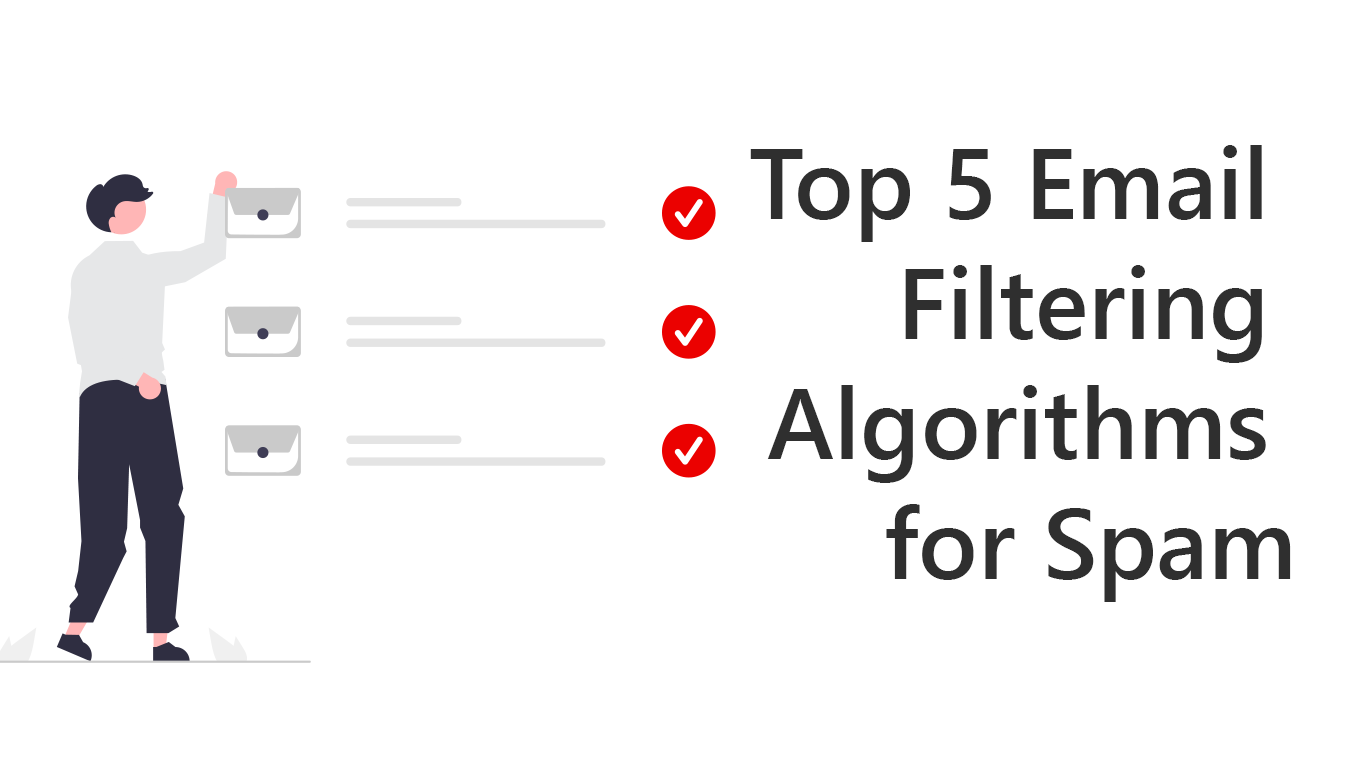As you navigate the relentless influx of emails daily, understanding the top 5 email filtering algorithms can greatly enhance your productivity and security. You've likely encountered Bayesian filtering without even realizing it, as it intelligently learns from your email behavior to block unwanted spam. Consider how keyword detection techniques could be refined to adapt to the ever-evolving landscape of spam tactics. Additionally, machine learning models, blacklist functionality, and challenge-response systems each offer unique advantages and potential drawbacks. Exploring their mechanisms in detail might just change how you manage your inbox, leading to more informed decisions about which emails deserve your attention.
Bayesian Filtering Explained
While you may not realize it, Bayesian filtering is a powerful technique that your email system likely uses to distinguish between spam and legitimate messages. This method relies on probabilities, analyzing the content of each email to determine the likelihood that it's spam based on data it's learned from past classifications.
Here's how it works: the filter is initially trained with a variety of email messages that are manually classified as either spam or not spam. From these, it learns the characteristics typically found in spam emails. When a new email arrives, the filter calculates the probability of spam by examining the message's features and comparing them with the trained data.
What's nifty about Bayesian filtering is its adaptability. As it processes more emails, it continuously updates its knowledge, becoming more precise over time. This means it gets better at catching spam while avoiding false positives, such as mistakenly identifying your important emails as spam.
The system isn't perfect; it requires a good amount of initial data to start being effective and must be regularly updated to keep up with the ever-evolving tactics of spammers. However, it's a robust tool that greatly enhances your email's defenses.
Keyword Detection Techniques
Another method your email system uses to identify spam is keyword detection, which scans for specific terms often found in unsolicited messages. This technique relies on a pre-defined list of suspicious words and phrases typically associated with spam, such as 'free,' 'guaranteed,' or 'credit card.' When an incoming email contains a high number of these keywords, it's flagged as potential spam.
You'll find that keyword detection is quite straightforward. Your email provider constantly updates its list of spam-trigger words based on emerging trends in spam content. This adaptability helps in catching new spam tactics that evolve daily. However, this method isn't foolproof. Spammers can cleverly disguise their keywords or use images to bypass text-based filters.
To enhance effectiveness, keyword detection often works in tandem with other filtering methods. It's a first line of defense, quickly weeding out the most obvious spam. Yet, it's important you don't rely solely on this technique. Over-reliance can lead to false positives where legitimate emails are mistakenly marked as spam because they contain phrases that are also common in spam.
Machine Learning Models
Exploring further, machine learning models offer a more dynamic approach to filtering spam emails. These sophisticated algorithms learn from the data they process, allowing you to address spam with greater accuracy over time. You'll find that these models adapt to new spamming techniques much faster than traditional methods.
Let's delve into how these models work. They typically involve training a model on large datasets containing both spam and non-spam emails. The machine learns to distinguish between these based on features such as the frequency of certain words, the presence of links, or patterns in the metadata. What's unique here is that these features are often derived from the content and context of the emails, which means the system gets better at detecting nuances in spam messages.
You might wonder about the types of machine learning models used. Common choices include neural networks, support vector machines, and decision trees. Each has its strengths in handling different aspects of spam detection. Neural networks are particularly good at understanding patterns in text, making them ideal for catching sophisticated spam emails that might fool simpler models.
As a result, integrating machine learning into your spam filtering system not only enhances its effectiveness but also guarantees it remains robust against evolving spam tactics.
Blacklist Functionality Overview
Shifting focus, let's examine blacklist functionality, a fundamental tool in your email filtering arsenal. Blacklists are databases of known spam sources—email addresses, IP addresses, or domains—that you don't want to receive messages from. When an incoming email's source matches an entry on the blacklist, it's automatically blocked or sent to your spam folder.
You might wonder how these lists are compiled. They're often created through user reports and security research companies that track spam trends. You can subscribe to public blacklists or create your own based on emails you've identified as spam. It's an essential approach to prevent unwanted emails from ever reaching your inbox.
However, it's vital to keep these lists updated. Spammers constantly change their tactics and contact information. An outdated blacklist won't be effective. You'll need to frequently check and revise your lists to maintain their effectiveness.
Moreover, while blacklists are powerful, they're not foolproof. There's always a risk of false positives—legitimate emails mistakenly blocked as spam. That's why it's important to occasionally review what's been filtered out, ensuring you're not missing important communications. Combining blacklists with other filtering methods can provide a more robust defense against spam.
Challenge-Response Systems
Challenge-response systems require that senders verify their identity to guarantee their emails reach your inbox. When you receive an email from an unfamiliar sender, the system sends a verification request back to them. The sender must complete a task, typically replying or clicking on a link, to prove they're not a spam bot. Only after they successfully respond does the email get delivered to you.
You might wonder if this method is too demanding or might deter legitimate senders. However, it effectively filters out automated spam because bots can't easily bypass these human interaction tasks. It's like having a bouncer at the door of your digital home, checking IDs before letting anyone in.
Yet, there are downsides. This system can be inconvenient for senders and might lead to delays in message delivery. Also, if the challenge is too complex, it could frustrate genuine senders or cause them to give up. You'll need to weigh these potential hassles against the benefit of significantly reduced spam.
Conclusion
You've got a solid arsenal against spam with these top 5 email filtering algorithms.
Bayesian filtering learns from each email, getting smarter over time.
Keyword detection stays alert to spammy phrases, adapting as spammers evolve.
Machine learning models get sharper with more data, enhancing their predictive power.
Blacklists block known spam sources, and challenge-response systems check if senders are legit, though they might slow things down.
Armed with these tools, you're better equipped to keep your inbox clean.

